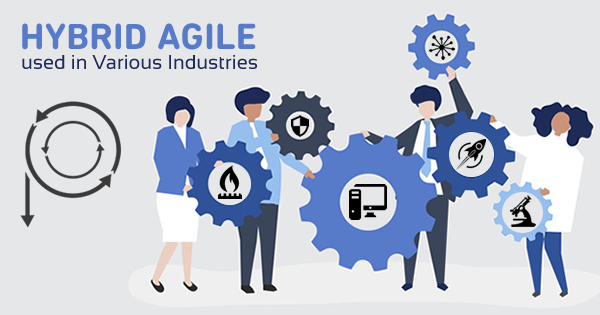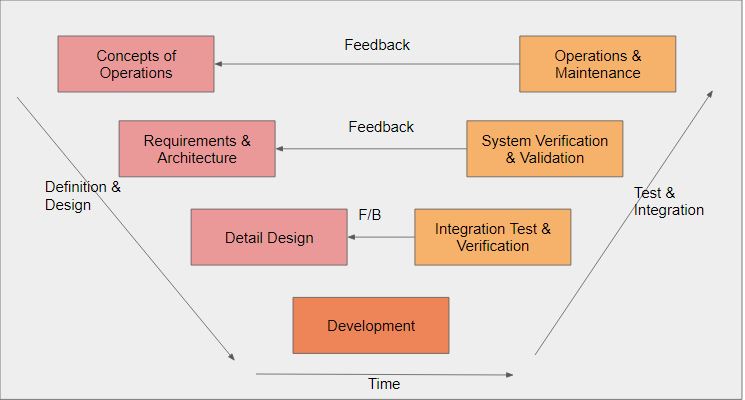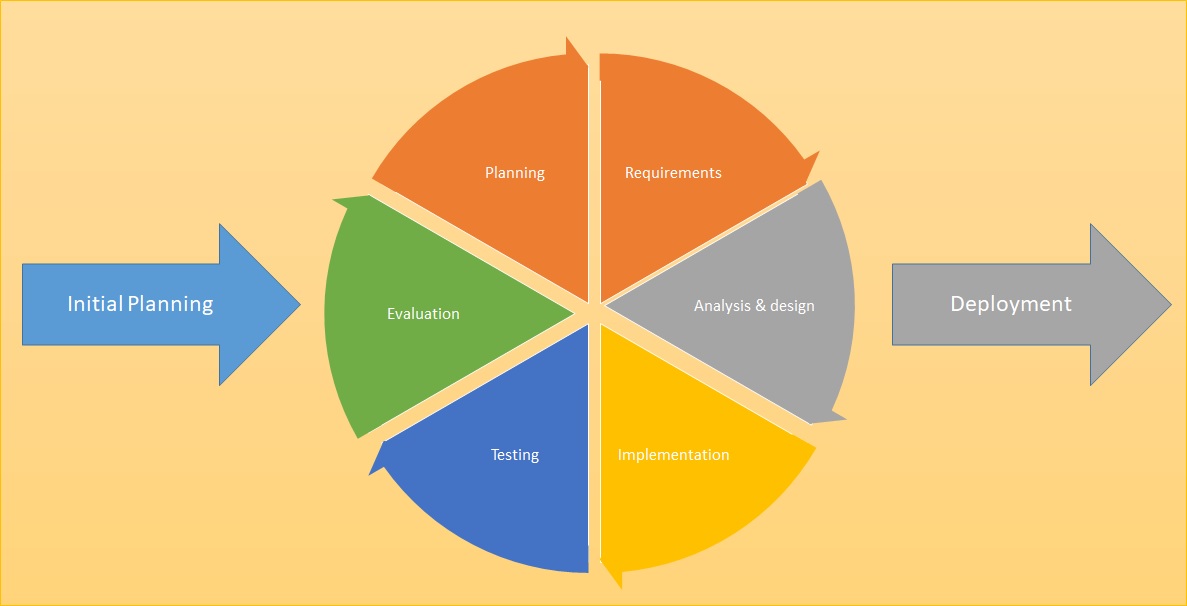The agile development model is practiced over a decade now. It has become a trend of project management as organizations experienced significant advantages over traditional waterfall model by using it. Though every agile methodology has a lot of means on them in theory, when it comes to implementation, sometimes we skip certain aspects of the core principles. The main reason for it is as the velocity of agile development increases the chances of resource burned down enhances significantly.
As a result, in due course, we move from core agile development to Hybrid Agile development which is a modified waterfall model. Interestingly hybrid agile is the most used practice in various industries instead of core actual agile methodology. Thus PMI has also included sections in its recent PMBOK – Project Management Body of Knowledge on hybrid agile approach.
So, if you are an aspiring agile professional or ready to take the next PMI-ACP exam, then you must gain an overview of different aspects of the hybrid agile framework and hybrid agile project management and of course hybrid agile vs. agile factors.
In this blog, we have tried to explain key aspects of hybrid agile along with hybrid agile project management overview.
An overview of Hybrid agile
Agile methodology is an iterative process where each stage follows N number of sprints of the same iterative cycle. A perfect agile process allows increased development speed, lowers cost, and quick resolutions of defects whereas the hybrid agile framework is a blend of the waterfall and agile methodology. It follows sequential flow initially and then becomes iterative throughout the development process.
A Hybrid agile model uses –
Waterfall Model for–
- requirement planning
- design
And the Agile Model for–
- requirements
- coding
- testing
- deployment
Hence, a hybrid agile is the best of both software development model which aids to business values with the rigor of the waterfall model and speed of the agile model.
Preparing for an Agile interview? Go through these top 25 Agile interview questions and get ready to crack the Agile interview in first go!
Hybrid agile vs. Agile
| Agile | Hybrid Agile |
| The agile model has a strict process and iteration cycle that varies on the agile methodology selected for a project. | The hybrid Agile approach is a mix of both waterfall and agile model. Hence, it does not cover all aspects of an agile methodology. Since a Hybrid Agile does not implement the best practices of agile methodology, you cannot expect the result that we can expect from an ideal agile project. |
| The agile model does not offer a flexible timeline and if it is not implemented/executed as expected can affect the end results. | The hybrid agile model offers a flexible yet disciplined timeline for iteration cycles which is not in the case of a key agile. |
| A core agile implementation needs highly skilled professionals to meet the strict deadlines along with quality deliverables. | Organizations can quickly adopt a hybrid agile with all level of professional talents. |
| The key agile methodology cannot always work for all projects | Hybrid agile is a customized solution which is more effective for changing situations. |
When is hybrid agile best suited in the industries?
The Hybrid agile model can be used in scenarios like:
- In a large project team where the traditional waterfall model is already in use, and it wants to shift to an agile model. In this case, as the processes and tools are already in use, that would take significant time as well as effort to move to agile practices. This leads to a hybrid agile approach where some part of the project work introduces agile practices whereas remaining parts follow the waterfall model.
- Organizations that need to meet regulatory and compliance requirements which effectively asks for rigorous governance and documentation of the project. This is not possible using pure agile. Hence, hybrid agile, in such scenario assures less timeline for design, analysis, and planning using its agile adoption. On the other hand, maintains compliance with the waterfall model.
- If the adoption of an agile culture is a problem for the organization, then a hybrid agile is a good stepping stone.
- The projects which have a huge UX design implementation with backend and front-end technologies.
- Projects that deal with legacy applications with a rigid release cycle and wants digital implementation. This type of projects follow rigid release cycles and need both waterfall and agile both the implementation, i.e., hybrid agile. Here waterfall driven stages are like
- release management
- program requirements
- program governance
- system integration testing
- user acceptance testing
Whereas digital platform features are built using agile frameworks.
- In a multi-vendor model where independent agile teams cannot run all the stages. In this case, requirements gathering and user acceptance testing are performed using a waterfall model whereas vendors follow the agile methodology for design, code, and testing.
Getting Agile Certified gives you a distinct edge over your peers. Read this article to know the best 5 Agile Certifications.
What are the different Hybrid Methodologies in practice?
To apply feedback mechanisms to the waterfall models, many hybrid agile methodologies are used. These hybrid methodologies incorporate different technical and functional gaps in the original design identified during development. Some of the popular and mostly used hybrid agile models include:
- V-Model
- Spiral Model
- Iterative
The V-Model
The V-Model of hybrid agile development provides a sequential development methodology that does not follow a linear way. It follows a feedback mechanisms for each stage of the pre-development and post-development phases of the lifecycle:
In this model, post-development, each stage of development phase associates its relationship with its corresponding testing phase, and finally, it takes a V shape. The horizontal axis represents the time, and the vertical axis represents the level of abstraction in the project.
The Spiral Model
The spiral model generates the hybrid agile process for a project by analyzing the risks associated with each iteration. Hence, it follows a risk-driven process. Every project has its own associated risks, and the spiral model helps to adopt elements from other processes such as a waterfall or incremental to mitigate them.
The key characteristics of the Spiral Model are – for each iteration this agile process follows the following four key phases identifies and mitigates risks:
- Determines the objectives and plans the scope of the increment
- Decide the prototypes, runs experiments and research to identify the potential technical and conceptual risks and solutions for them.
- Design, develop and testing of the increment
- Release with effective monitoring of the increment along with feedback to aid in next iteration planning.
The spiral model of hybrid agile follows many characteristics such as spike solutions, prototypes of a pure agile model.
Iterative and Incremental Development
The iterative and incremental development could be any combination of either iterative method or iterative design for hybrid agile software development.
In this process, the entire project is broken down into small iterations where each iteration applies the lesson learned from the previous iteration. In each iteration required design modification is aided and if required new functional features are also added.
In a real sense, the iterative model of hybrid agile development follows the same steps likea waterfall model but within a short time frame.
Preparing for PMI-ACP Certification? Start you preparation with Whizlabs Practice Test Now.
Hybrid agile project management
By now you may have got a fair idea on the technical overview of the hybrid agile framework. But when it comes to the question of project management, you must be curious to know how hybrid project management differs from standard project management?
WBS approach
The hybrid agile approach includes all the elements and principles of both waterfall and agile methods. In a hybrid agile method, the project is broken down into different components either by discipline like hardware, software, etc. or by functionality. This work breakdown is performed by using a process called Work Breakdown Structure or WBS.
WBS is the main beauty of Hybrid project management approach which defines all high-level tasks and their dependencies along with the final product or service to be delivered through the waterfall model. Whereas agile helps to speed up the development of components and its subcomponents in the plan. As a result, the outcome of a project becomes quality products with less turnaround time and faster response time to market changes. Once the WBS is set for the project, each component may take one to few months for release.
Introducing Sprints
Next, all the components are broken down again into four to six weeks releases which are known as sprints. At this stage, all agile project management methods are applied. The result of each sprint is tested and sent either to the market or used as the base for the next sprint.
Less time for project planning
As the initial project plan involves high-level granularity, it does not take much time. Like Waterfall method, a hybrid project management clearly defines and provides documentation of the overall scope and a project deadline before creating a high-level project plan.
Better PMO management
Additionally, as the hybrid project management incorporates the best of both project management frameworks, the hybrid agile approach allows PMOs to improve results for large sized and longer projects. It also helps to manage risks better as it deals with uncertainty more effectively.
Final Words
A hybrid agile approach for managing projects can offer advantages and can be highly effective. However, implementing and planning it properly requires adequate preparation and forethought. Thus, it is important to gain knowledge of hybrid agile methodologies and hybrid agile project management. Practical experience is the best solution for it. However, to make yourself credible to the market and evaluate your skill you need to prove your professional expertise at the upfront.
Professional certifications definitely mark a candidate different from the crowd when added in the resume. Hence, if you are looking for agile/hybrid agile related certifications, PMI-ACP is the best answer for you. Like any other PMI conducted exams this one is also the toughest one which asks for your thorough understanding of the process.
So if you want to crack those tricky questions take your time for preparation, especially practice tests to do an on-stage rehearsal before the show! Whizlabs offers you to measure your knowledge base with its Exam Simulator and Online Course; PMI-ACP Practice Exam which is a brainstorming output of our PMI certified industry experts.
So, why late? Try us today and gain the agility in your career!
- Top 10 Highest Paying Cloud Certifications in 2024 - March 1, 2023
- 12 AWS Certifications – Which One Should I Choose? - February 22, 2023
- 11 Kubernetes Security Best Practices you should follow in 2024 - May 30, 2022
- How to run Kubernetes on AWS – A detailed Guide! - May 30, 2022
- Free questions on CompTIA Network+ (N10-008) Certification Exam - April 13, 2022
- 30 Free Questions on Microsoft Azure AI Fundamentals (AI-900) - March 25, 2022
- How to Integrate Jenkins with GitHub? - March 22, 2022
- How to Create CI/CD Pipeline Inside Jenkins ? - March 22, 2022





